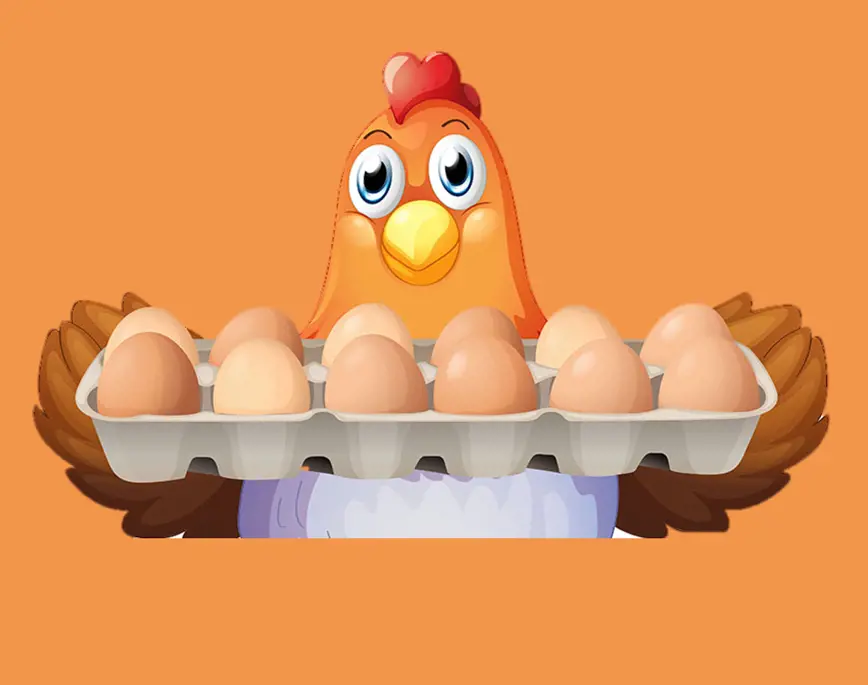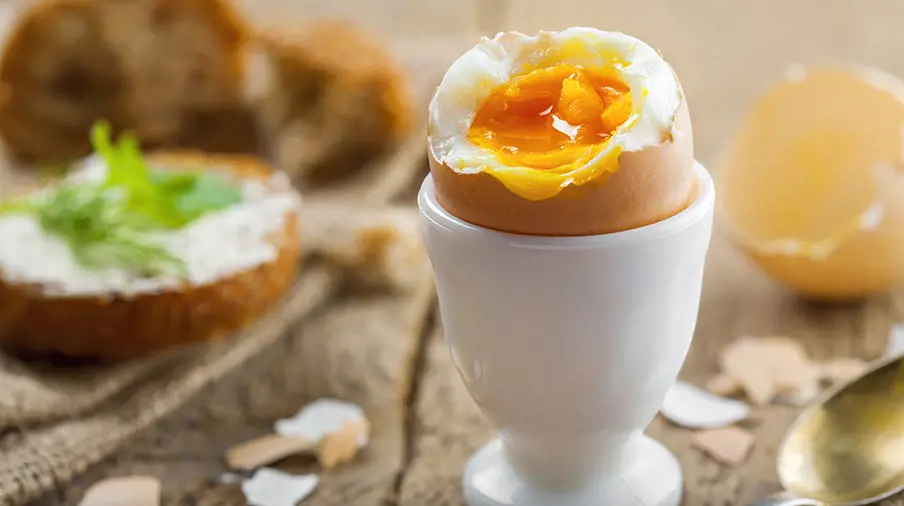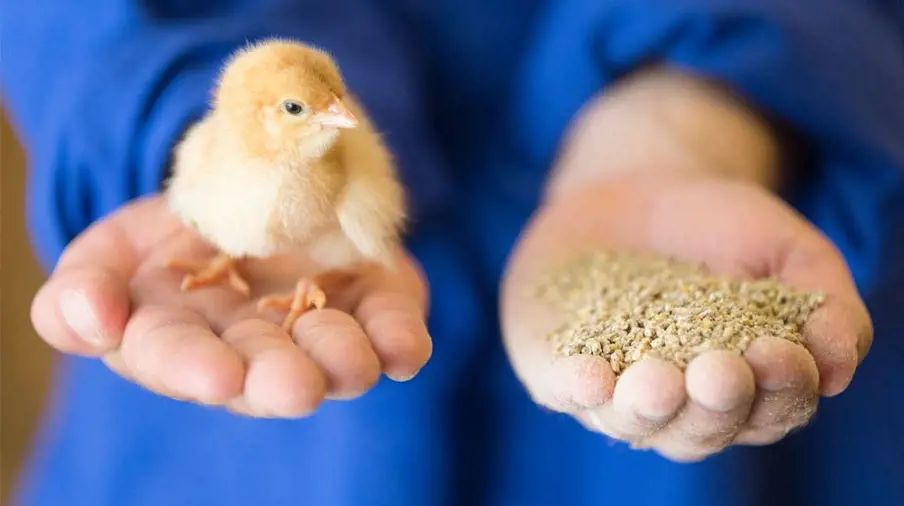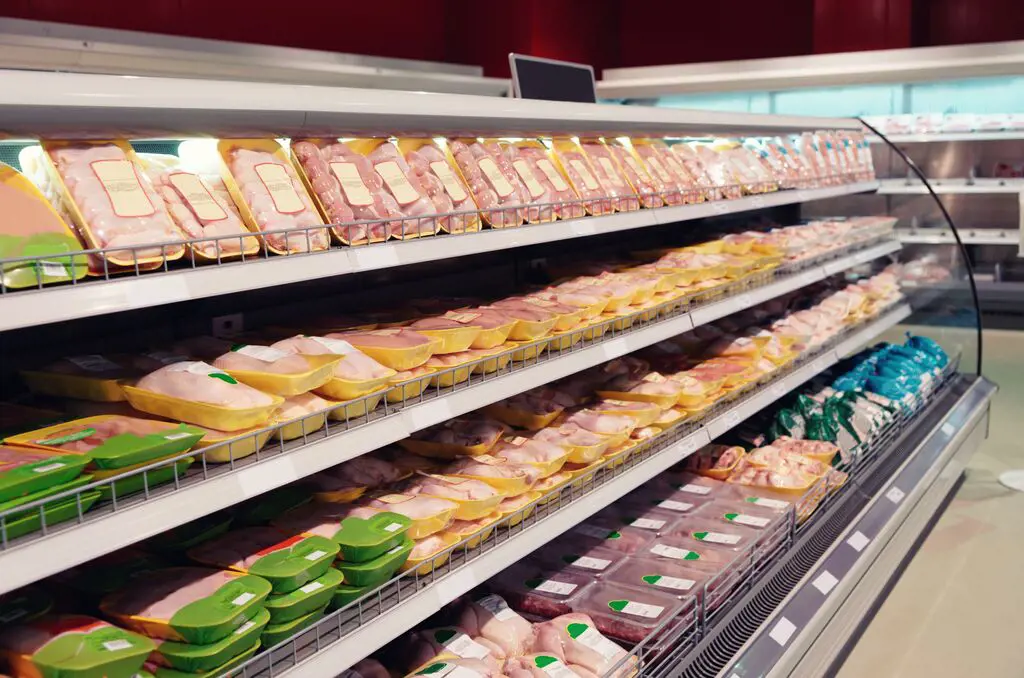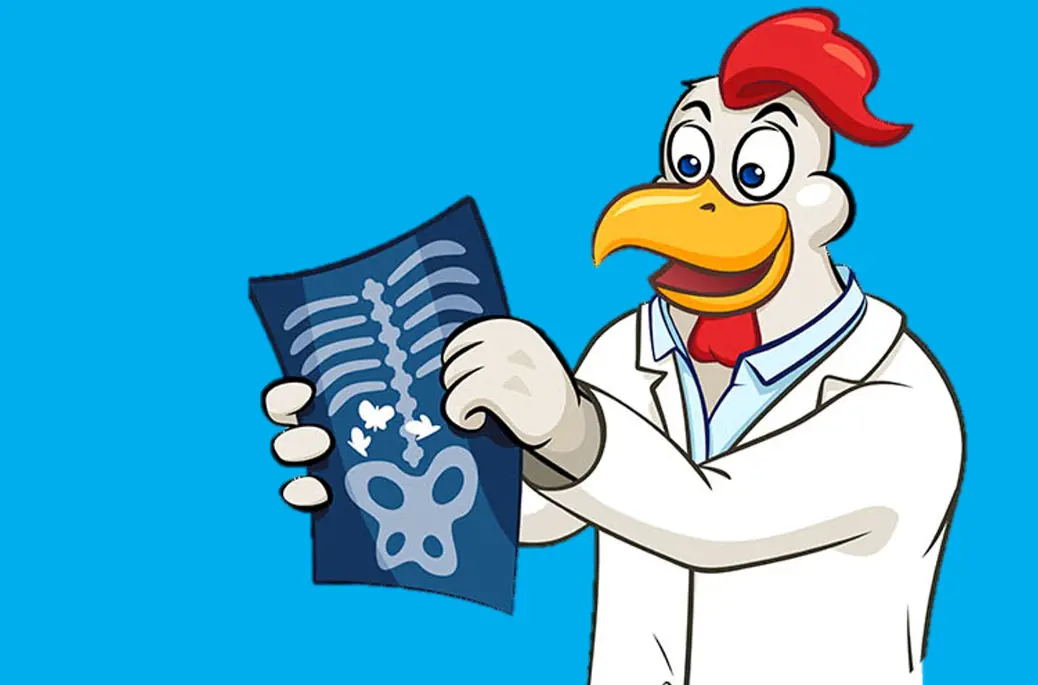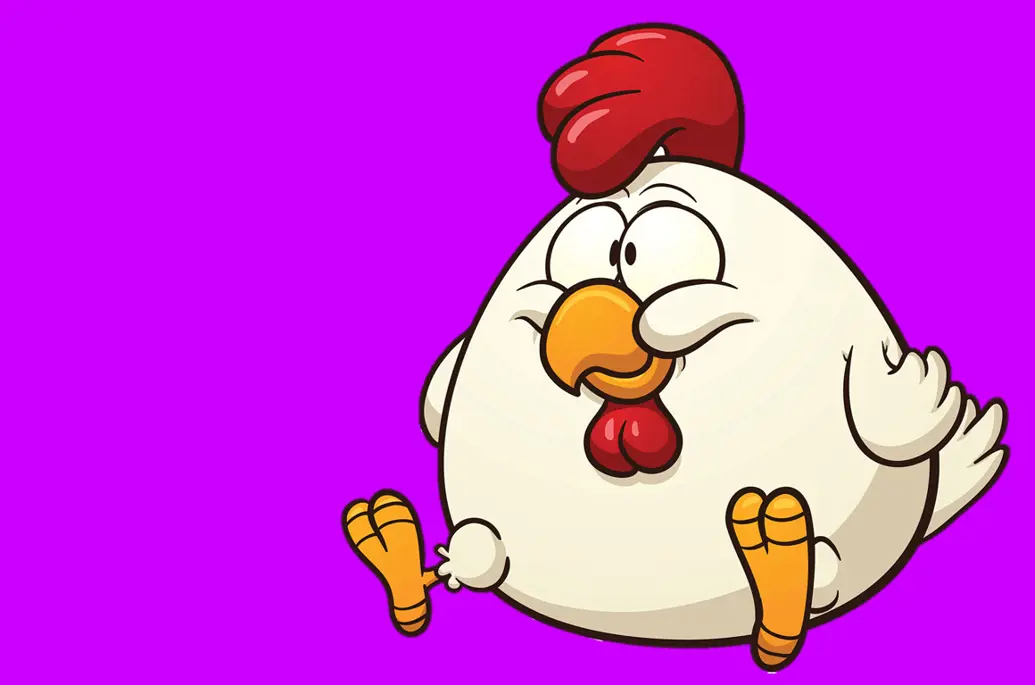
What do chickens eat?
Chickens eat anything and everything. They are omnivores, which means they eat both plants/vegetables and meat. Broilers and laying hens do not eat the same food at all. This is because hens need to lay lots of eggs and broilers need to grow meat on their bones quickly.
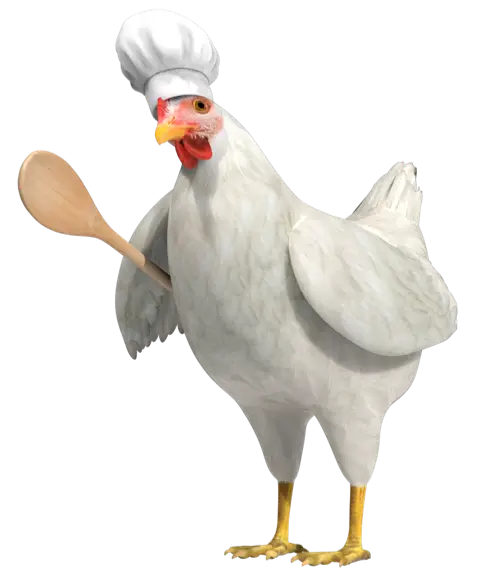
What do chickens eat?
Chickens eat anything and everything, which means they eat both plants/vegetables and meat. So, chickens are called omnivores (a carnivore only eats meat and a herbivore only vegetables or plants).
Chickens naturally eat seeds and cereals. On poultry farms, they get cereals such as oats, wheat, barley and maize. They also get by-products (leftovers) from the food industry, such as soya and rape meal, and sunflower and wheat residues. This way, chickens recycle what we humans don’t eat. Finally, they also receive a special premix from De Heus. This contains all the vitamins and minerals that the chick needs.
Broilers and laying hens do not eat the same food at all. This is because hens need to lay eggs and broilers need to grow meat on their bones.

Feed for broilers
The feed for broilers is divided into 4 stages:
This is what chicks eat in the first week. Their digestive system has not fully developed yet. That’s why they still eat very small pellets, almost as small as breadcrumbs.
This is the feed that chicks get after about a week. The pellets are now slightly larger. Their digestive system has already developed a little better. So, part of their feed is made up of whole wheat. This means their gizzard (an organ to help digestion) is put to work. The chicks need to do a lot of growing, so they are allowed to eat a lot.
The pellets in this stage are even bigger, as much as three millimetres long. The chicks have grown since stage 3, so they can eat the larger pellets easily. At this stage, the chicks get a little more whole wheat than before. Their digestive system has formed enough to allow them to digest whole wheat.
This is the feed that broilers eat to grow big. The chicks are now even bigger than before, so they can eat bigger pellets. They also get a bigger proportion of whole wheat in their feed – as much as 35%.
Did you know that the feed for laying hens also changes frequently throughout their lifetime? This is mainly due to the amount of calcium they need to make egg shells. A large chicken lays a large egg, so she needs a lot of calcium.
Feed for laying hens
A broad diet...
Small chicks get a special feed in the first two weeks of their lives. This contains very fine, mini pellets.
This is what the chicks get after three weeks. The feed is already slightly coarser and different in composition.
This feed is suitable for hens from nine to ten weeks old.
Hens get this feed up to 17 weeks old.
When hens move from the rearing farm to the laying farm, they have to get used to their new environment. That’s why they get the food they are already used to in the first week in their new home.
Laying hens eat this feed until the first ones in their flock are ready to lay an egg. ‘Pre’ means ‘before’, so ‘before laying’.
This is what the hens eat for about three weeks to get used to the feed they’ll get to make them good laying hens.
Hens eat this during their peak laying period, until they are about 50 weeks old. The eggs become bigger, which is why they need a different feed.
This feed is suitable for hens up to about 60 to 75 weeks old.
This feed is for hens in the last few weeks of their life, up to 90 weeks and older.
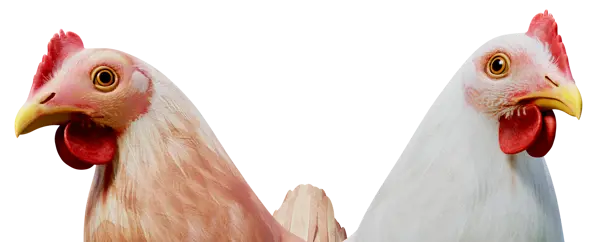
Tasty treats
Chickens have fewer taste buds than we do: only 24 compared to about 9,000 taste buds in humans and 300 to 400 in a parrot, for example. So, you might think a chicken can’t taste much. But that doesn’t stop them from loving chicken treats, made from tasty seeds and crustaceans or mealworms.
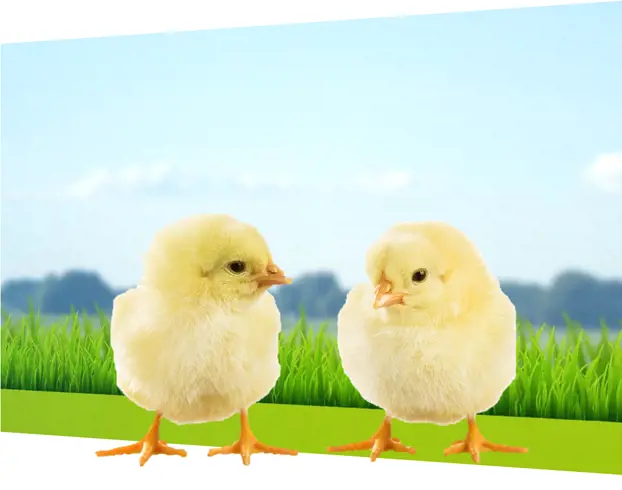
Premix
There are chefs working at De Heus who make delicious meals for broilers and laying hens. But we also make premix, which includes vitamins, minerals and healthy trace elements. It contains calcium too for strong bones and egg shells. Larger chickens also get lime in the form of limestone. This allows the gizzards to break down the food.
So, the chefs at De Heus know chickens in and out! They know exactly what chickens need to eat to develop meat or lay eggs, but also to build up a healthy immune system and resistance, so that they don’t get sick.

Tips on giving a presentation
Giving a presentation can be quite stressful, but with these tips from Anna and Dean, you’ll be sure to do well. Check them out!



